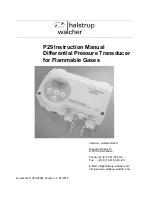
●
Exit TUNE mode by dong a short push and release of the PTT switch. A double beep should sound in the speaker indicating the
mode has been released.
Setting Modulation level:
Modulation level is ideally set using an oscilloscope so that you can view the modulation envelope. However, the on board modulation LED
will give you a good idea.
●
Speaking “TEST” into the microphone should make the Modulation indicator LED flash bright and then flicker. If the LED remains
bright and does not seem to “follow” your voice, the gain is too high. Conversely, it it barely comes on, the gain is too low.
NOTE: The voltage at the base of Q10 should be about 1.5 volts when transmitting. If it is higher than about 1.9 volts, this will cause the
mixer to become unbalanced as the coupling caps charge and transmit a little burst of RF. If it is much below 1.3 volts, Q10 may not turn on
or the audio signal from the microphone element will be clipped and distorted.
Due to variations in the type of mic element used, adjusting the value of the bias supply resistor R25 maybe required. Go up one 5% step if
the voltage is too high and go lower one 5% step if too low.
Transmit audio quality:
A common problem is not having the BFO frequency set correctly, typically too low in frequency. This results in a double sideband output,
with neither sounding very good. This can happen even if the receiver audio sounds alright. The higher in frequency you can get the BFO
and still have good sounding audio, the better the opposite sideband and carrier suppression will be. Typically this frequency will be
9.003,000 MHz. +/- 500 Hz depending on how the tolerances of the parts which happen to end up on your board line up with each other.
Note that if using a near-by receiver to monitor the transmit audio, it will likely also to be able to hear the USB and carrier component of the
Survivor output signal. The selectivity of the filter in this low cost rig isn't stellar, so some opposite side band output is to be expected. On air,
this component of the signal is masked by noise for a station any distance away.
With that, you should now be able to attempt your first QSO with the new rig!
Tuning range options:
When full tuning range is used, (both capacitor sections of main tuning cap in parallel) full power output will not be obtained over the full
tuning range, due to the bandwidth of the transmitter tuned circuit, T4. This is why T4 should be peaked at the center of the tuning range.
Tuning range can be reduced if desired by using only one of the capacitor sections. Reducing tuning range will make tuning less “touchy”
and provide more consistent power output over the tuning range. Tweak the spacing of the turns on the VFO coil T5 to set the tuning range
in your desired section of the band.
Microphone options:
The Survivor rig is designed to use a Electret microphone element, which are commonly used in CB mics, cordless phones and hands free
microphones for cell phones. Electrets elements have a range of voltages needed to operate. Some work with as little as 1.5 volts and others
need as much as 5. This rig is designed to use a 3V element, which is one of the more common operating voltages.
Since the supply for the mic is 5.1 volts, using a 5V element isn't going to work.
Dynamic microphones elements are not directly compatible. Older CB set often used a Dynamic mic. Dynamics have a low impedance and
low output voltage, therefore an external preamp will be required. I addition, a 2.2K resistor needs to be placed between the mic input and
ground to bias Q10 to the proper voltage. A DC blocking cap may also be required, but this is usually included in the preamp output.
Crystal mics would also need special treatment, but these are so rare these days it's unlikely you would use one.
15
Manual revised 20160229
Summary of Contents for The Survivor
Page 18: ...18 Manual revised 20160229...





































